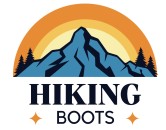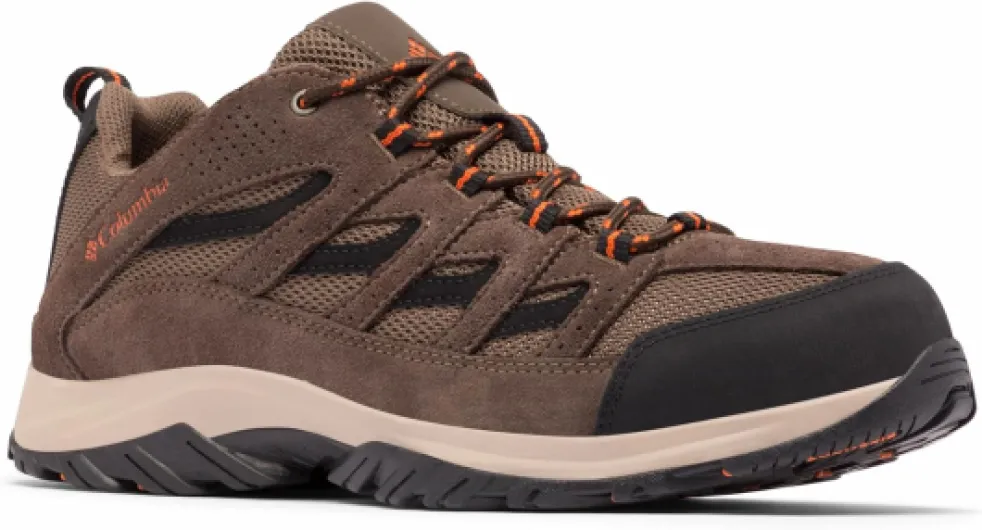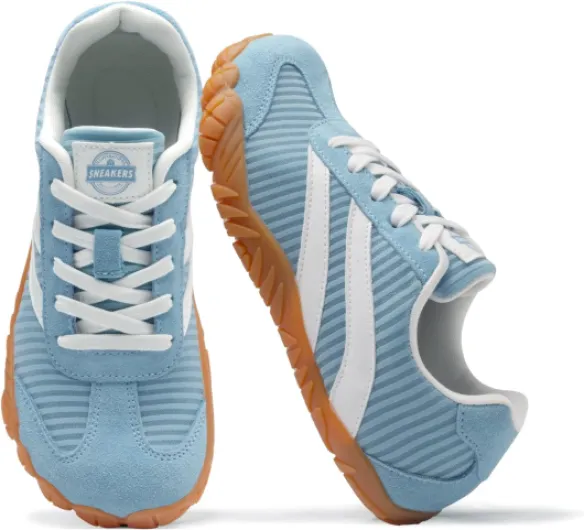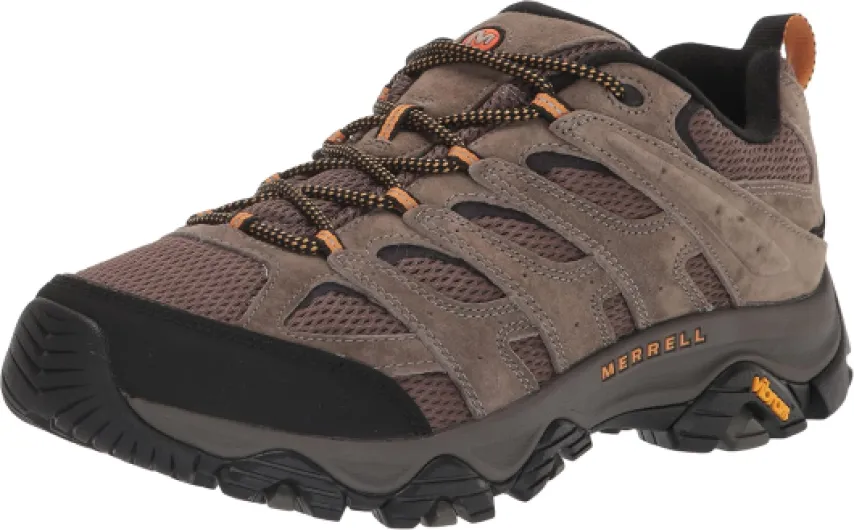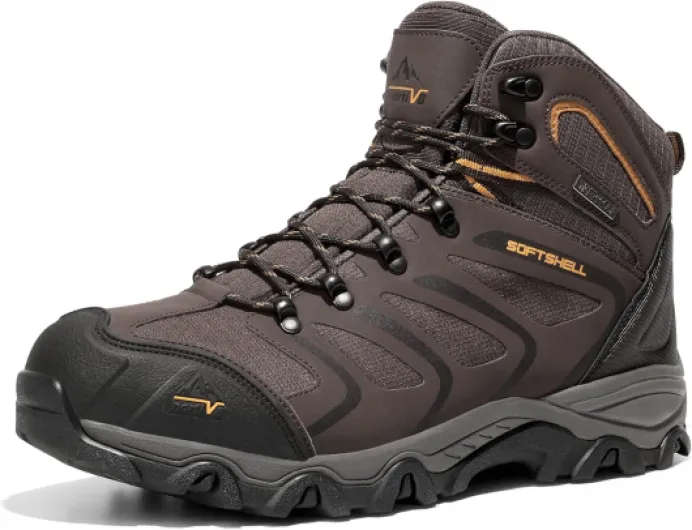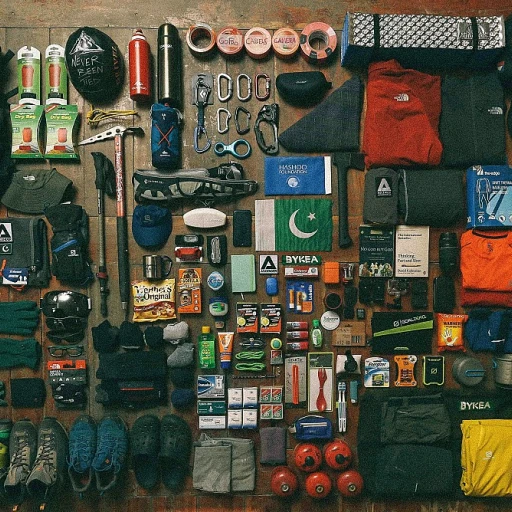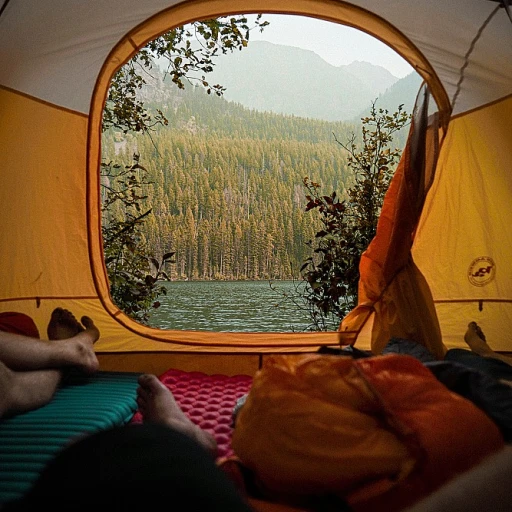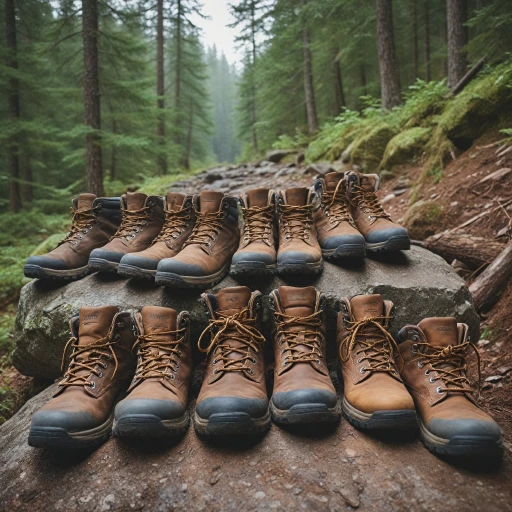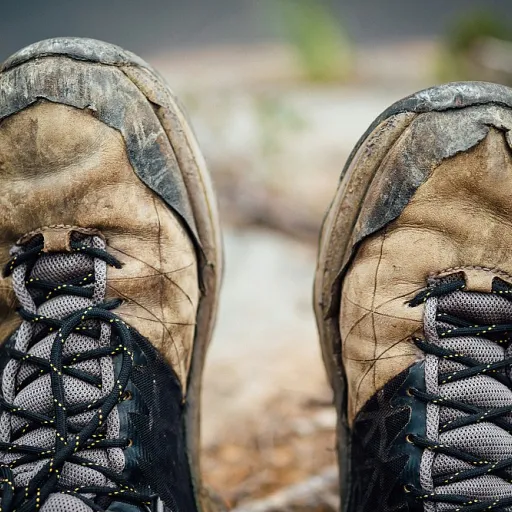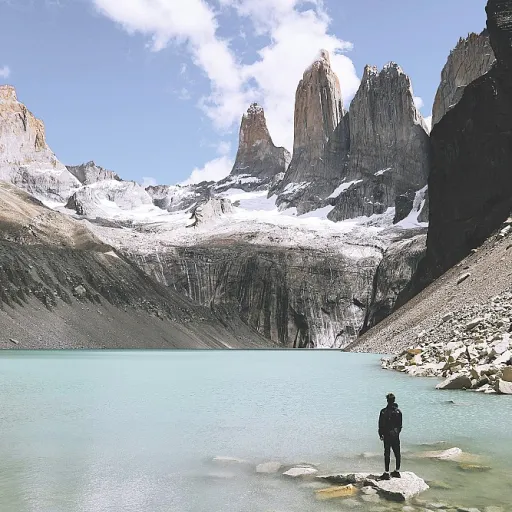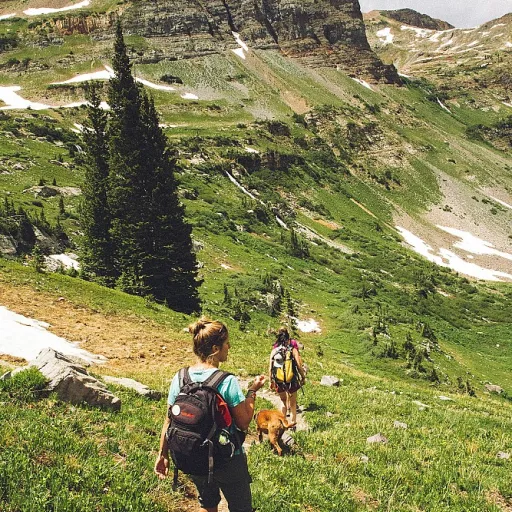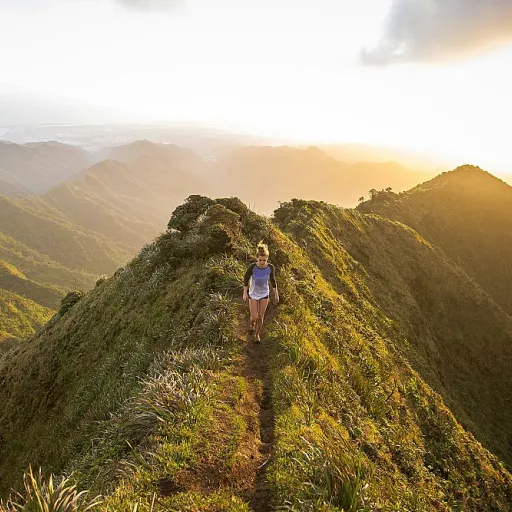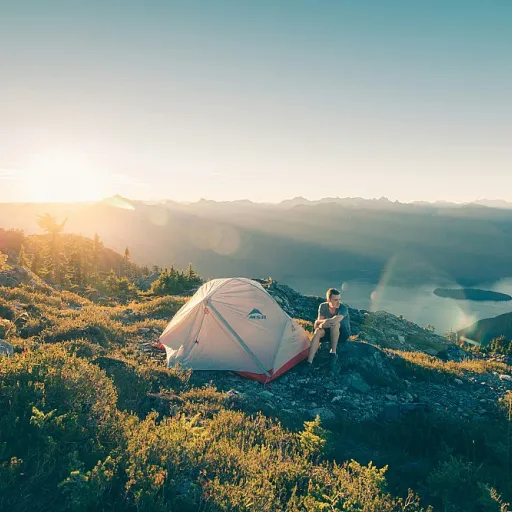
Understanding the Need for a Wide Toe Box
The Role of the Toe Box in Hiking Comfort
In the world of hiking footwear, the toe box often receives less attention than it should. However, it's a crucial feature that can significantly impact your hiking experience. The toe box is the front part of the shoe where your toes live and is critical in providing both room and protection. For those seeking optimal comfort and protection on the trail, a shoe with a wide toe box is essential, especially if you have wide feet.
Hiking shoes designed with a spacious toe box allow your toes to splay naturally, mirroring the effects found in barefoot shoes. This natural movement can reduce the likelihood of blisters and other foot discomforts, a common issue among hikers on long trails. Moreover, a wide toe box accommodates foot swelling, which is common during extended hikes or in hot weather conditions.
For those with wide feet, finding the right shoe fit can be daunting. Many shoe manufacturers offer men wide options, ensuring that there are choices available that cater to different foot shapes. Additionally, trail running and other outdoor activities necessitate a snug yet comfortable fit, emphasizing the importance of appropriate sizing.
When considering hiking boots, it's essential to balance indulgence in wide toe boxes and the need for a secure fit to prevent unnecessary movement within the shoe. This balance ensures that the shoe can handle various terrains, offering both flexibility and support. For more insights into why the right fit is so essential, you can check out this reliable companion for every trail for specific models that might fit your needs.
Benefits of Wide Toe Box Hiking Shoes
Why Opt for Ample Space in Your Hiking Gear
When it comes to selecting the right hiking shoes, the need for a wide toe box cannot be overstated. A roomy fit ensures that your toes have the freedom to move without being cramped. This is particularly important for those who embark on lengthy trails or rugged terrains, where feet naturally swell after hours of hiking. Such shoes are versatile, catering to both men and women looking for comfort over extended periods.
- Enhanced Comfort: Shoes with a wide toe design reduce friction between toes. As a result, hikers experience less discomfort, allowing for a more enjoyable trail experience.
- Prevention of Injuries: Proper fitting footwear helps prevent common issues such as blisters, calluses, and even long-term foot deformities. It's a crucial consideration for any barefoot hiking enthusiast.
- Improved Balance and Stability: With a wide toe box, shoes offer a stable platform, greatly benefiting trail running or tackling uneven paths.
Pioneers in the hiking industry, certain brands offer models tailored expressly for wide feet. Such designs often incorporate features like durable soles and ergonomic low cut shapes. For a reliable companion on every trail, the Lowa Tibet GTX is worth exploring. Its attention to detail ensures optimal comfort and support, making it a top choice among seasoned hikers.
Choosing the Right Fit
Finding the Perfect Fit for Your Adventures
Choosing the right fit for hiking shoes with a wide toe box is essential for comfort and performance on the trails. Whether you're hiking, trail running, or simply enjoying the outdoors, ensuring your shoes accommodate your feet well is a step towards a more enjoyable experience.
The first consideration when assessing fit is the length and width of the shoe. Many brands offer shoes explicitly designed for wide feet, which is crucial if you often find standard sizing too constricting. Ideally, your hiking shoe should provide ample space for your toes, preventing the discomfort often caused by pressure or rubbing at the toes.
When determining your sizing fit, it is beneficial to try on hiking boots and shoes later in the day when your feet have expanded slightly. This practice can help achieve a more accurate feel of how your shoes will fit during prolonged use. Pay attention to the feel of the sole and ensure there's adequate cushioning and support, given that trail surfaces can be unpredictable.
Beyond just length and girth, the shape and construction of the shoe play a significant role in comfort. A shoe with a low cut might suffices for casual hikes, whereas more robust shoe boots might be required for rigorous trails. Evaluate hiking shoes in both barefoot shoes and traditional styles to find what aligns best with your preferences.
As you aim to find your true size, consider utilizing in-store services or online resources that guide you through detailed sizing measurements. Finding the perfect insoles for your hiking adventure can also contribute to achieving an optimal fit. Selecting the right insoles can complement a wide toe box, offering enhanced comfort and support, essential for longer treks.
Ultimately, the best hiking shoes for men or shoes wide enough for women's needs depend heavily on individual foot shape and hiking requirements. Take the time to explore and adjust to what feels best, as this can dramatically impact your hiking experience.
Materials and Design Considerations
Material Choices and Shoe Construction
When it comes to selecting the right hiking shoes with a spacious toe box, the materials and design of the shoes play a crucial role in the overall comfort and performance. The best options for hikers, whether they prefer low cut shoes for trail running or traditional hiking boots, revolve around features that offer flexibility and breathability. Let's break down the factors to consider:- Upper Materials: Breathable mesh and durable leather are common in both hiking shoes and boots. Mesh offers excellent ventilation, keeping feet dry during longer treks, while leather provides stability and protection, especially beneficial on rugged terrains.
- Sole Construction: A solid sole is crucial for trail hikers, offering grip and traction on uneven surfaces. Vibram soles or proprietary rubber compounds are popular choices, known for their robustness and durability. A keenly structured sole supports the arches and prevents foot fatigue, which is especially necessary for those with wide feet or "freet and barefoot" preferences.
- Internal Lining: Look for moisture-wicking materials that help keep your feet dry from sweat. This comfort layer is important to avoid blisters and maintain comfort, especially in long hikes or warmer climates.
- Toe Box Construction: A wider toe box is a key feature, as discussed earlier, accommodating the natural spread of the toes and preventing common hiking ailments. Seek designs that are specifically labeled as barefoot or wide options, ensuring a comfortable fit for every "true size."
- Low Vs. High Cut Design: Low cut shoes are generally lighter and more flexible, suitable for casual hikes or trail running. Meanwhile, something like the Lowa Renegade GTX offers additional ankle support for more intensive or multi-day hikes, making them a preferred choice among seasoned men and women hikers looking for the "best hiking" combination of support and comfort.
Top Brands and Models
Discover Top Hiking Shoe Brands and Models
When it comes to selecting the best hiking shoes for your needs, there are multiple brands that cater specifically to hikers seeking a spacious toe box. These brands prioritize both comfort and durability, making them favorites among experienced hikers and trail enthusiasts.- Altra: Known for their spacious toe boxes, Altra offers models like the Lone Peak series, highly appreciated by the barefoot hiking community. Their shoes are designed with zero-drop platforms, allowing for a more natural feel when on the trail.
- Keen: Renowned for its commitment to comfort, Keen provides designs with roomy toe boxes that accommodate wider feet. Their Targhee and Venture collections offer stability and support, ideal for enduring lengthy treks.
- Merrell: A staple in the hiking community, Merrell's Moab series is celebrated for its reliable comfort and protection. These shoes feature a wide fit option, ensuring maximum comfort for those with broad feet.
- Topo Athletic: This brand meets the needs of trail runners who require a more barefoot-inspired design. Topo Athletic delivers models that marry the benefits of a wide toe box with a secure, low-profile fit.
- New Balance: With extensive experience in crafting both running and hiking shoes, New Balance provides models like the Trail Hierro which aim for comfort, traction, and a snug fit with a wide toe box, perfect for lengthy outdoor adventures.
Caring for Your Hiking Shoes
Maintaining Your Hiking Investment
Caring for your hiking shoes is crucial to extend their lifespan and maintain their performance on and off the trail. Here’s how you can ensure your wide toe box hiking shoes remain in top shape:- Cleaning Your Shoes: After each hike, especially on muddy or wet trails, take a moment to clean your shoes. Remove the laces and insoles, then wash off any dirt or debris with a soft brush and lukewarm water. Avoid using harsh chemicals as they can damage the materials.
- Drying Properly: Allow your shoes to dry naturally at room temperature. Avoid placing them near a direct heat source as it can warp the sole and damage the materials, particularly in barefoot shoes.
- Regularly Check the Fit: Over time, the fit of your shoes may change. Periodically check that the shoes still fit well, especially if you've been using them regularly. Remember, a spacious toe box is crucial for comfort, but the entire shoe should also provide a snug fit.
- Sole and Heel Maintenance: Keep an eye on the soles and heels of your shoes and boots. Low cut shoes for men and women, trail running shoes, and traditional hiking boots alike can wear unevenly. Resole them when necessary to maintain traction and stability.
- Waterproofing and Conditioning: Use a high-quality waterproofing product to maintain water resistance, especially on leather components. This not only protects the shoes but also improves their longevity.
